- Home
- H. P. Lovecraft
The Road to Madness Page 43
The Road to Madness Read online
Page 43
Danforth’s eyes as well as nose proved better than mine, for it was likewise he who first noticed the queer aspect of the debris after we had passed many half-choked arches leading to chambers and corridors on the ground level. It did not look quite as it ought after countless thousands of years of desertion, and when we cautiously turned on more light we saw that a kind of swath seemed to have been lately tracked through it. The irregular nature of the litter precluded any definite marks, but in the smoother places there were suggestions of the dragging of heavy objects. Once we thought there was a hint of parallel tracks as if of runners. This was what made us pause again.
It was during that pause that we caught—simultaneously this time—the other odor ahead. Paradoxically, it was both a less frightful and more frightful odor—less frightful intrinsically, but infinitely appalling in this place under the known circumstances—unless, of course, Gedney—for the odor was the plain and familiar one of common petrol—every-day gasoline.
Our motivation after that is something I will leave to psychologists. We knew now that some terrible extension of the camp horrors must have crawled into this nighted burial place of the aeons, hence could not doubt any longer the existence of nameless conditions—present or at least recent just ahead. Yet in the end we did let sheer burning curiosity—or anxiety—or autohypnotism—or vague thoughts of responsibility toward Gedney—or what not—drive us on. Danforth whispered again of the print he thought he had seen at the alley turning in the ruins above; and of the faint musical piping—potentially of tremendous significance in the light of Lake’s dissection report, despite its close resemblance to the cave-mouth echoes of the windy peaks—which he thought he had shortly afterward half heard from unknown depths below. I, in my turn, whispered of how the camp was left—of what had disappeared, and of how the madness of a lone survivor might have conceived the inconceivable—a wild trip across the monstrous mountains and a descent into the unknown, primal masonry—
But we could not convince each other, or even ourselves, of anything definite. We had turned off all light as we stood still, and vaguely noticed that a trace of deeply filtered upper day kept the blackness from being absolute. Having automatically begun to move ahead, we guided ourselves by occasional flashes from our torch. The disturbed debris formed an impression we could not shake off, and the smell of gasoline grew stronger. More and more ruin met our eyes and hampered our feet, until very soon we saw that the forward way was about to cease. We had been all too correct in our pessimistic guess about that rift glimpsed from the air. Our tunnel quest was a blind one, and we were not even going to be able to reach the basement out of which the abyssward aperture opened.
The torch, flashing over the grotesquely carved walls of the blocked corridor in which we stood, showed several doorways in various states of obstruction; and from one of them the gasoline odor—quite submerging that other hint of odor—came with especial distinctness. As we looked more steadily, we saw that beyond a doubt there had been a slight and recent clearing away of debris from that particular opening. Whatever the lurking horror might be, we believed the direct avenue toward it was now plainly manifest. I do not think anyone will wonder that we waited an appreciable time before making any further motion.
And yet, when we did venture inside that black arch, our first impression was one of anticlimax. For amidst the littered expanse of that sculptured Crypt—a perfect cube with sides of about twenty feet—there remained no recent object of instantly discernible size; so that we looked instinctively, though in vain, for a farther doorway. In another moment, however, Danforth’s sharp vision had descried a place where the floor debris had been disturbed; and we turned on both torches full strength. Though what we saw in that light was actually simple and trifling, I am none the less reluctant to tell of it because of what it implied. It was a rough leveling of the debris, upon which several small objects lay carelessly scattered, and at one corner of which a considerable amount of gasoline must have been spilled lately enough to leave a strong odor even at this extreme superplateau altitude. In other words, it could not be other than a sort of camp—a camp made by questing beings who, like us, had been turned back by the unexpectedly choked way to the abyss.
Let me be plain. The scattered objects were, so far as substance was concerned, all from Lake’s camp; and consisted of tin cans as queerly opened as those we had seen at that ravaged place, many spent matches, three illustrated books more or less curiously smudged, an empty ink bottle with its pictorial and instructional carton, a broken fountain pen, some oddly snipped fragments of fur and tent cloth, a used electric battery with circular of directions, a folder that came with our type of tent heater, and a sprinkling of crumpled papers. It was all bad enough but when we smoothed out the papers and looked at what was on them, we felt we had come to the worst. We had found certain inexplicably blotted papers at the camp which might have prepared us, yet the effect of the sight down there in the prehuman vaults of a nightmare city was almost too much to bear.
A mad Gedney might have made the groups of dots in imitation of those found on the greenish soapstones, just as the dots on those insane five-pointed grave mounds might have been made; and he might conceivably have prepared rough, hasty sketches—varying in their accuracy or lack of it—which outlined the neighboring parts of the city and traced the way from a circularly represented place outside our previous route—a place we identified as a great cylindrical tower in the carvings and as a vast circular gulf glimpsed in our aerial survey—to the present five-pointed structure and the tunnel mouth therein.
He might, I repeat, have prepared such sketches; for those before us were quite obviously compiled, as our own had been, from late sculptures somewhere in the glacial labyrinth, though not from the ones which we had seen and used. But what the art-blind bungler could never have done was to execute those sketches in a strange and assured technique perhaps superior, despite haste and carelessness, to any of the decadent carvings from which they were taken—the characteristic and unmistakable technique of the Old Ones themselves in the dead city’s heyday.
There are those who will say Danforth and I were utterly mad not to flee for our lives after that; since our conclusions were now—notwithstanding their wildness—completely fixed, and of a nature I need not even mention to those who have read my account as far as this. Perhaps we were mad—for have I not said those horrible peaks were mountains of madness? But I think I can detect something of the same spirit—albeit in a less extreme form—in the men who stalk deadly beasts through African jungles to photograph them or study their habits. Half paralyzed with terror though we were, there was nevertheless fanned within us a blazing flame of awe and curiosity which triumphed in the end.
Of course we did not mean to face that—or those—which we knew had been there, but we felt that they must be gone by now. They would by this time have found the other neighboring entrance to the abyss, and have passed within, to whatever night-black fragments of the past might await them in the ultimate gulf—the ultimate gulf they had never seen. Or if that entrance, too, was blocked, they would have gone on to the north seeking another. They were, we remembered, partly independent of light.
Looking back to that moment, I can scarcely recall just what precise form our new emotions took—just what change of immediate objective it was that so sharpened our sense of expectancy. We certainly did not mean to face what we feared—yet I will not deny that we may have had a lurking, unconscious wish to spy certain things from some hidden vantage point. Probably we had not given up our zeal to glimpse the abyss itself, though there was interposed a new goal in the form of that great circular place shown on the crumpled sketches we had found. We had at once recognized it as a monstrous cylindrical tower figuring in the very earliest carvings, but appearing only as a prodigious round aperture from above. Something about the impressiveness of its rendering, even in these hasty diagrams, made us think that its subglacial levels must still form a feature of peculiar
importance. Perhaps it embodied architectural marvels as yet unencountered by us. It was certainly of incredible age according to the sculptures in which it figured—being indeed among the first things built in the city. Its carvings, if preserved, could not but be highly significant. Moreover, it might form a good present link with the upper world—a shorter route than the one we were so carefully blazing, and probably that by which those others had descended.
At any rate, the thing we did was to study the terrible sketches—which quite perfectly confirmed our own—and start back over the indicated course to the circular place; the course which our nameless predecessors must have traversed twice before us. The other neighboring gate to the abyss would lie beyond that. I need not speak of our journey—during which we continued to leave an economical trail of paper—for it was precisely the same in kind as that by which we had reached the cul-de-sac; except that it tended to adhere more closely to the ground level and even descend to basement corridors. Every now and then we could trace certain disturbing marks in the debris or litter underfoot; and after we had passed outside the radius of the gasoline scent, we were again faintly conscious—spasmodically—of that more hideous and more persistent scent. After the way had branched from our former course, we sometimes gave the rays of our single torch a furtive sweep along the walls; noting in almost every case the well-nigh omnipresent sculptures, which indeed seem to have formed a main aesthetic outlet for the Old Ones.
About 9:30 P.M., while traversing a long, vaulted corridor whose increasingly glaciated floor seemed somewhat below the ground level and whose roof grew lower as we advanced, we began to see strong daylight ahead and were able to turn off our torch. It appeared that we were coming to the vast circular place, and that our distance from the upper air could not be very great. The corridor ended in an arch surprisingly low for these megalithic ruins, but we could see much through it even before we emerged. Beyond there stretched a prodigious round space—fully two hundred feet in diameter—strewn with debris and containing many choked archways corresponding to the one we were about to cross. The walls were—in available spaces—boldly sculptured into a spiral band of heroic proportions; and displayed, despite the destructive weathering caused by the openness of the spot, an artistic splendor far beyond anything we had encountered before. The littered floor was quite heavily glaciated, and we fancied that the true bottom lay at a considerably lower depth.
But the salient object of the place was the titanic stone ramp which, eluding the archways by a sharp turn outward into the open floor, wound spirally up the stupendous cylindrical wall like an inside counterpart of those once climbing outside the monstrous towers or ziggurats of antique Babylon. Only the rapidity of our flight, and the perspective which confounded the descent with the tower’s inner wall, had prevented our noticing this feature from the air, and thus caused us to seek another avenue to the subglacial level. Pabodie might have been able to tell what sort of engineering held it in place, but Danforth and I could merely admire and marvel. We could see mighty stone corbels and pillars here and there, but what we saw seemed inadequate to the function performed. The thing was excellently preserved up to the present top of the tower—a highly remarkable circumstance in view of its exposure—and its shelter had done much to protect the bizarre and disturbing cosmic sculptures on the walls.
As we stepped out into the awesome half daylight of this monstrous cylinder bottom—fifty million years old, and without doubt the most primally ancient structure ever to meet our eyes—we saw that the ramp-traversed sides stretched dizzily up to a height of fully sixty feet. This, we recalled from our aerial survey, meant an outside glaciation of some forty feet; since the yawning gulf we had seen from the plane had been at the top of an approximately twenty-foot mound of crumbled masonry, somewhat sheltered for three-fourths of its circumference by the massive curving walls of a line of higher ruins. According to the sculptures, the original tower had stood in the center of an immense circular plaza, and had been perhaps five hundred or six hundred feet high, with tiers of horizontal disks near the top, and a row of needlelike spires along the upper rim. Most of the masonry had obviously toppled outward rather than inward—a fortunate happening, since otherwise the ramp might have been shattered and the whole interior choked. As it was, the ramp showed sad battering; whilst the choking was such that all the archways at the bottom seemed to have been recently cleared.
It took us only a moment to conclude that this was indeed the route by which those others had descended, and that this would be the logical route for our own ascent despite the long trail of paper we had left elsewhere. The tower’s mouth was no farther from the foothills and our waiting plane than was the great terraced building we had entered, and any further subglacial exploration we might make on this trip would lie in this general region. Oddly, we were still thinking about possible later trips—even after all we had seen and guessed. Then, as we picked our way cautiously over the debris of the great floor, there came a sight which for the time excluded all other matters.
It was the neatly huddled array of three sledges in that farther angle of the ramp’s lower and outward-projecting course which had hitherto been screened from our view. There they were—the three sledges missing from Lake’s camp—shaken by a hard usage which must have included forcible dragging along great reaches of snowless masonry and debris, as well as much hand portage over utterly unnavigable places. They were carefully and intelligently packed and strapped, and contained things memorably familiar enough: the gasoline stove, fuel cans, instrument cases, provision tins, tarpaulins obviously bulging with books, and some bulging with less obvious contents—everything derived from Lake’s equipment.
After what we had found in that other room, we were in a measure prepared for this encounter. The really great shock came when we stepped over and undid one tarpaulin whose outlines had peculiarly disquieted us. It seems that others as well as Lake had been interested in collecting typical specimens; for there were two here, both stiffly frozen, perfectly preserved, patched with adhesive plaster where some wounds around the neck had occurred, and wrapped with care to prevent further damage. They were the bodies of young Gedney and the missing dog.
X
Many people will probably judge us callous as well as mad for thinking about the northward tunnel and the abyss so soon after our somber discovery, and I am not prepared to say that we would have immediately revived such thoughts but for a specific circumstance which broke in upon us and set up a whole new train of speculations. We had replaced the tarpaulin over poor Gedney and were standing in a kind of mute bewilderment when the sounds finally reached our consciousness—the first sounds we had heard since descending out of the open where the mountain wind whined faintly from its unearthly heights. Well-known and mundane though they were, their presence in this remote world of death was more unexpected and unnerving than any grotesque or fabulous tones could possibly have been—since they gave a fresh upsetting to all our notions of cosmic harmony.
Had it been some trace of that bizarre musical piping over a wide range which Lake’s dissection report had led us to expect in those others—and which, indeed, our overwrought fancies had been reading into every wind howl we had heard since coming on the camp horror—it would have had a kind of hellish congruity with the aeon-dead region around us. A voice from other epochs belongs in a graveyard of other epochs. As it was, however, the noise shattered all our profoundly seated adjustments—all our tacit acceptance of the inner antarctic as a waste utterly and irrevocably void of every vestige of normal life. What we heard was not the fabulous note of any buried blasphemy of elder earth from whose supernal toughness an age-denied polar sun had evoked a monstrous response. Instead, it was a thing so mockingly normal and so unerringly familiarized by our sea days off Victoria Land and our camp days at McMurdo Sound that we shuddered to think of it here, where such things ought not to be. To be brief—it was simply the raucous squawking of a penguin.
The muf
fled sound floated from subglacial recesses nearly opposite to the corridor whence we had come—regions manifestly in the direction of that other tunnel to the vast abyss. The presence of a living water bird in such a direction—in a world whose surface was one of age-long and uniform lifelessness—could lead to only one conclusion; hence our first thought was to verify the objective reality of the sound. It was, indeed, repeated, and seemed at times to come from more than one throat. Seeking its source, we entered an archway from which much debris had been cleared; resuming our trail blazing—with an added paper supply taken with curious repugnance from one of the tarpaulin bundles on the sledges—when we left daylight behind.
As the glaciated floor gave place to a litter of detritus, we plainly discerned some curious, dragging tracks; and once Danforth found a distinct print of a sort whose description would be only too superfluous. The course indicated by the penguin cries was precisely what our map and compass prescribed as an approach to the more northerly tunnel mouth, and we were glad to find that a bridgeless thoroughfare on the ground and basement levels seemed open. The tunnel, according to the chart, ought to start from the basement of a large pyramidal structure which we seemed vaguely to recall from our aerial survey as remarkably well-preserved. Along our path the single torch showed a customary profusion of carvings, but we did not pause to examine any of these.
Suddenly a bulky white shape loomed up ahead of us, and we flashed on the second torch. It is odd how wholly this new quest had turned our minds from earlier fears of what might lurk near. Those other ones, having left their supplies in the great circular place, must have planned to return after their scouting trip toward or into the abyss; yet we had now discarded all caution concerning them as completely as if they had never existed. This white, waddling thing was fully six feet high, yet we seemed to realize at once that it was not one of those others. They were larger and dark, and, according to the sculptures, their motion over land surfaces was a swift, assured matter despite the queerness of their sea-born tentacle equipment. But to say that the white thing did not profoundly frighten us would be vain. We were indeed clutched for an instant by primitive dread almost sharper than the worst of our reasoned fears regarding those others. Then came a flash of anticlimax as the white shape sidled into a lateral archway to our left to join two others of its kind which had summoned it in raucous tones. For it was only a penguin—albeit of a huge, unknown species larger than the greatest of the known king penguins, and monstrous in its combined albinism and virtual eyelessness.

 The Best of H.P. Lovecraft
The Best of H.P. Lovecraft The Definitive H.P. Lovecraft: 67 Tales Of Horror In One Volume
The Definitive H.P. Lovecraft: 67 Tales Of Horror In One Volume The Complete Works of H.P. Lovecraft
The Complete Works of H.P. Lovecraft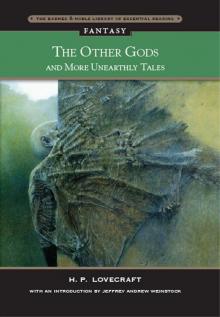 Other Gods and More Unearthly Tales
Other Gods and More Unearthly Tales Lovecraft's Fiction Volume I, 1905-1925
Lovecraft's Fiction Volume I, 1905-1925 The Shadow Out of Time
The Shadow Out of Time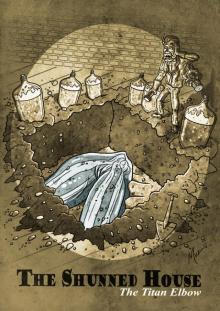 The Shunned House
The Shunned House Lovecraft's Fiction Volume II, 1926-1928
Lovecraft's Fiction Volume II, 1926-1928 The Thing on the Doorstep and Other Weird Stories
The Thing on the Doorstep and Other Weird Stories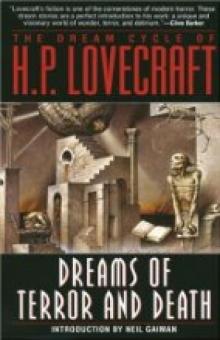 Dream Cycle of H. P. Lovecraft: Dreams of Terror and Death
Dream Cycle of H. P. Lovecraft: Dreams of Terror and Death Great Tales of Horror
Great Tales of Horror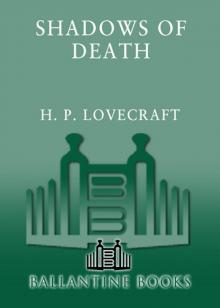 Shadows of Death
Shadows of Death Delphi Complete Works of H. P. Lovecraft (Illustrated)
Delphi Complete Works of H. P. Lovecraft (Illustrated) Waking Up Screaming: Haunting Tales of Terror
Waking Up Screaming: Haunting Tales of Terror H.P. Lovecraft Goes to the Movies
H.P. Lovecraft Goes to the Movies The Road to Madness
The Road to Madness The Complete H.P. Lovecraft Reader (68 Stories)
The Complete H.P. Lovecraft Reader (68 Stories)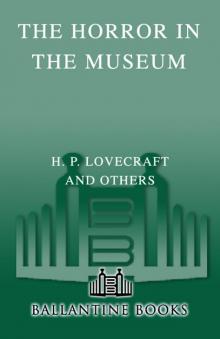 The Horror in the Museum
The Horror in the Museum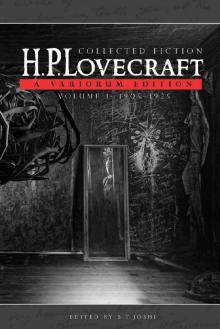 Collected Fiction Volume 1 (1905-1925): A Variorum Edition
Collected Fiction Volume 1 (1905-1925): A Variorum Edition Lovecrafts_Fiction, vol.I_1905-1925
Lovecrafts_Fiction, vol.I_1905-1925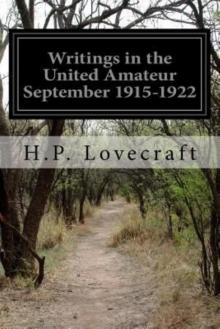 Writings in the United Amateur, 1915-1922
Writings in the United Amateur, 1915-1922 H.P. Lovecraft: The Complete Works
H.P. Lovecraft: The Complete Works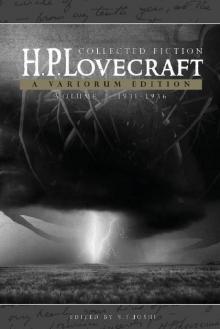 Collected Fiction Volume 3 (1931-1936): A Variorum Edition
Collected Fiction Volume 3 (1931-1936): A Variorum Edition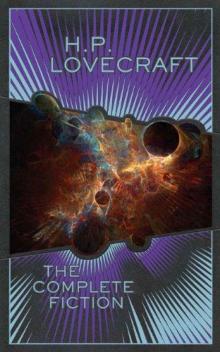 H.P. Lovecraft: The Complete Fiction
H.P. Lovecraft: The Complete Fiction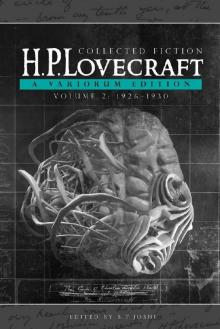 Collected Fiction Volume 2 (1926-1930): A Variorum Edition
Collected Fiction Volume 2 (1926-1930): A Variorum Edition Yog Sothothery - The Definitive H.P. Lovecraft Anthology
Yog Sothothery - The Definitive H.P. Lovecraft Anthology The Complete H.P. Lovecraft Collection (Xist Classics)
The Complete H.P. Lovecraft Collection (Xist Classics)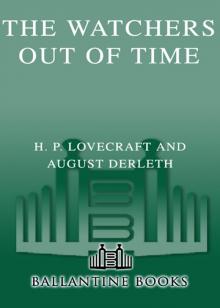 The Watchers Out of Time
The Watchers Out of Time Eldritch Tales
Eldritch Tales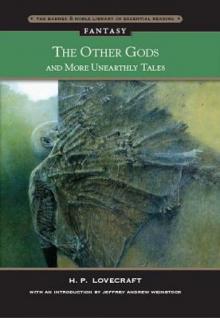 The Other Gods And More Unearthly Tales
The Other Gods And More Unearthly Tales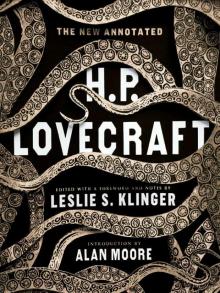 The New Annotated H. P. Lovecraft
The New Annotated H. P. Lovecraft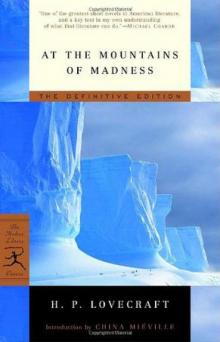 At the mountains of madness
At the mountains of madness Bloodcurdling Tales of Horror and the Macabre
Bloodcurdling Tales of Horror and the Macabre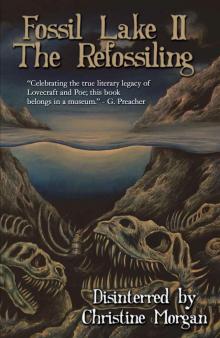 Fossil Lake II: The Refossiling
Fossil Lake II: The Refossiling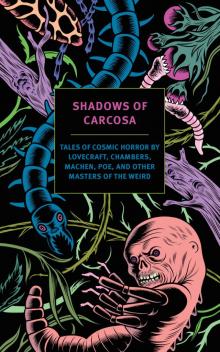 Shadows of Carcosa: Tales of Cosmic Horror by Lovecraft, Chambers, Machen, Poe, and Other Masters of the Weird
Shadows of Carcosa: Tales of Cosmic Horror by Lovecraft, Chambers, Machen, Poe, and Other Masters of the Weird H. P. Lovecraft
H. P. Lovecraft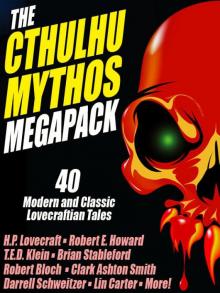 The Cthulhu Mythos Megapack
The Cthulhu Mythos Megapack The Complete H. P. Lovecraft Reader (2nd Edition)
The Complete H. P. Lovecraft Reader (2nd Edition)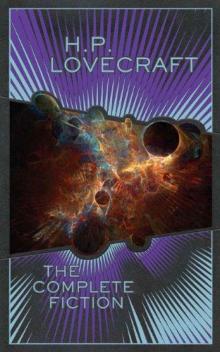 The Complete Fiction
The Complete Fiction Waking Up Screaming
Waking Up Screaming Transition of H. P. Lovecraft
Transition of H. P. Lovecraft![[1935] The Shadow Out of Time Read online](http://i1.bookreadfree.com/i2/04/12/1935_the_shadow_out_of_time_preview.jpg) [1935] The Shadow Out of Time
[1935] The Shadow Out of Time The Horror Megapack
The Horror Megapack